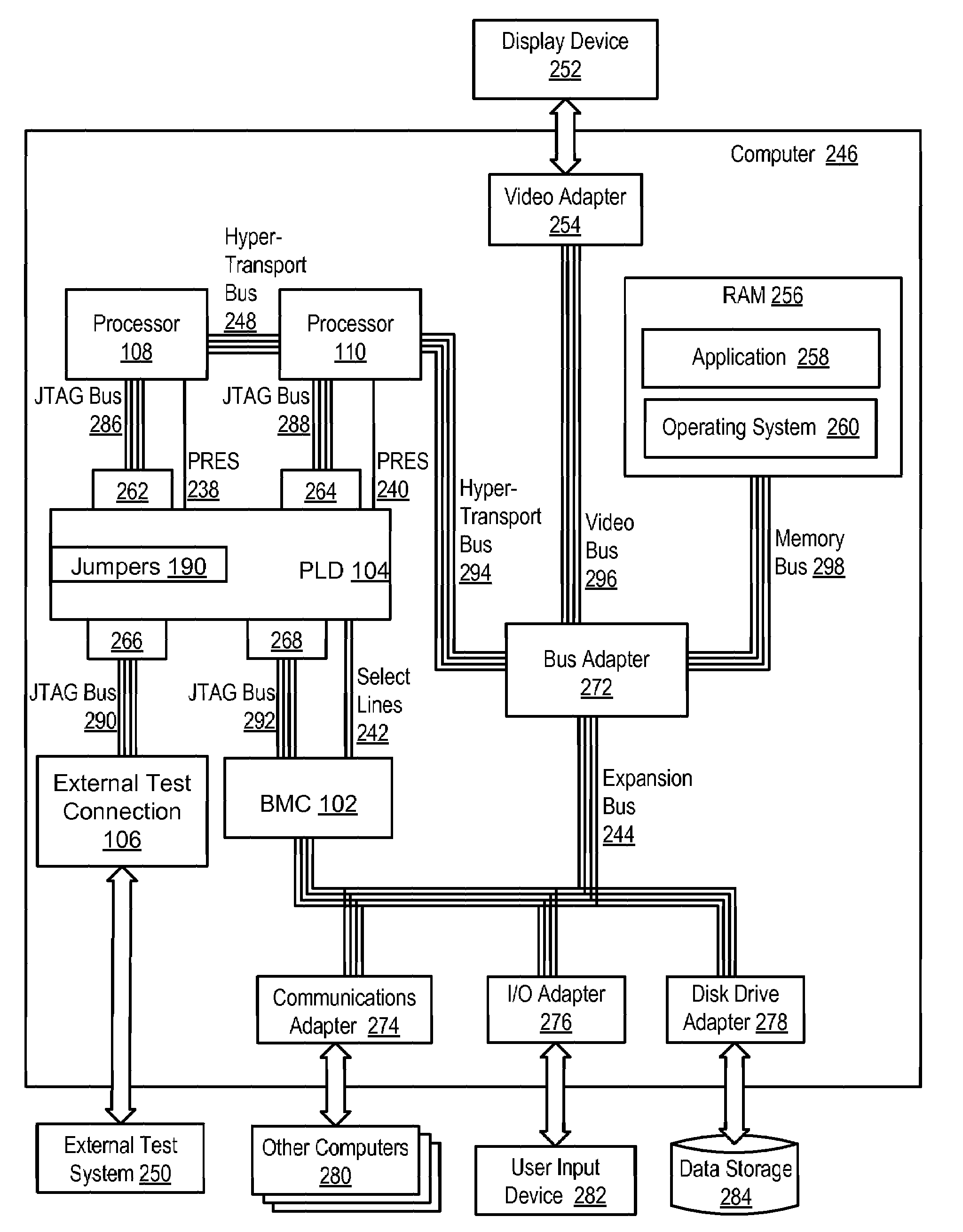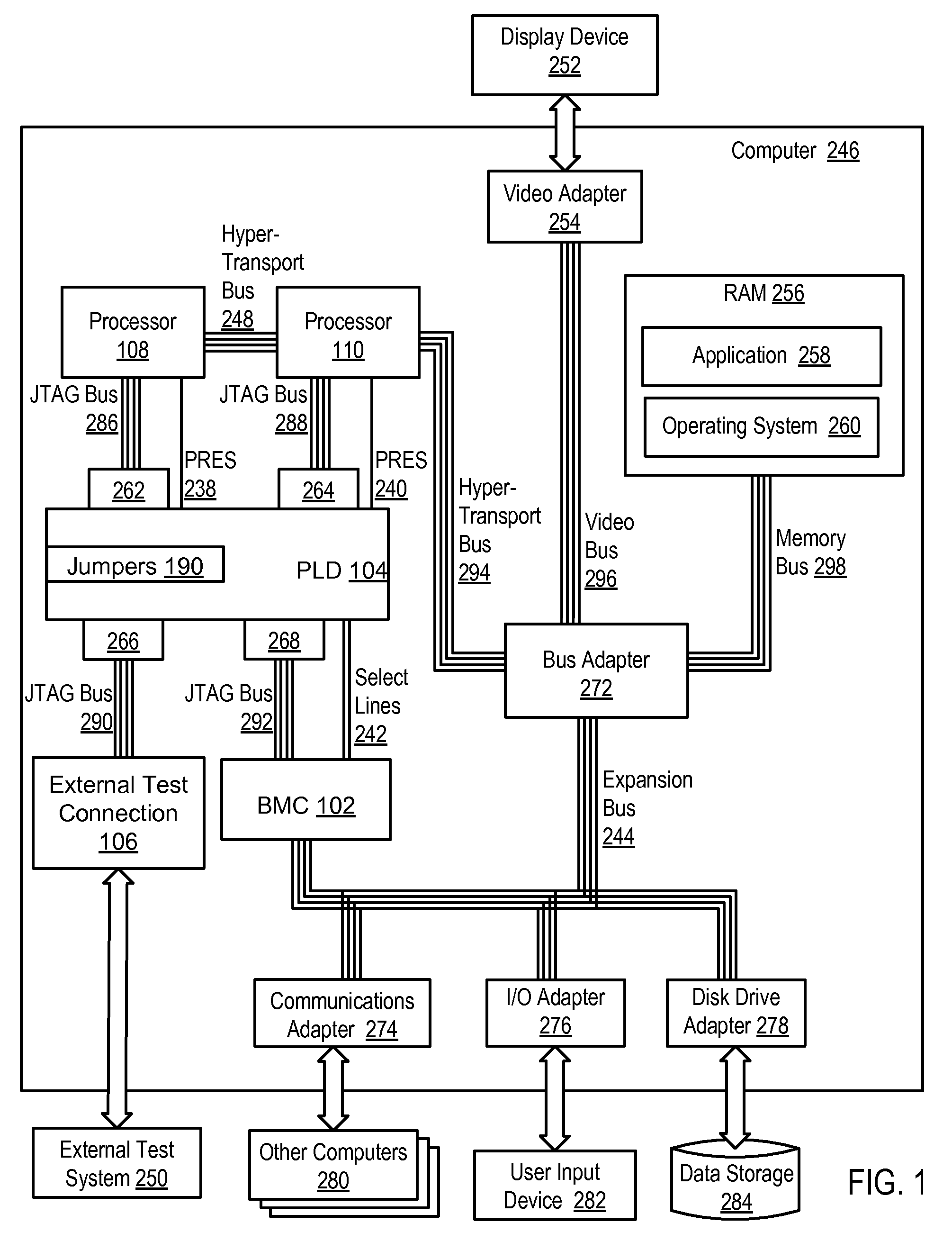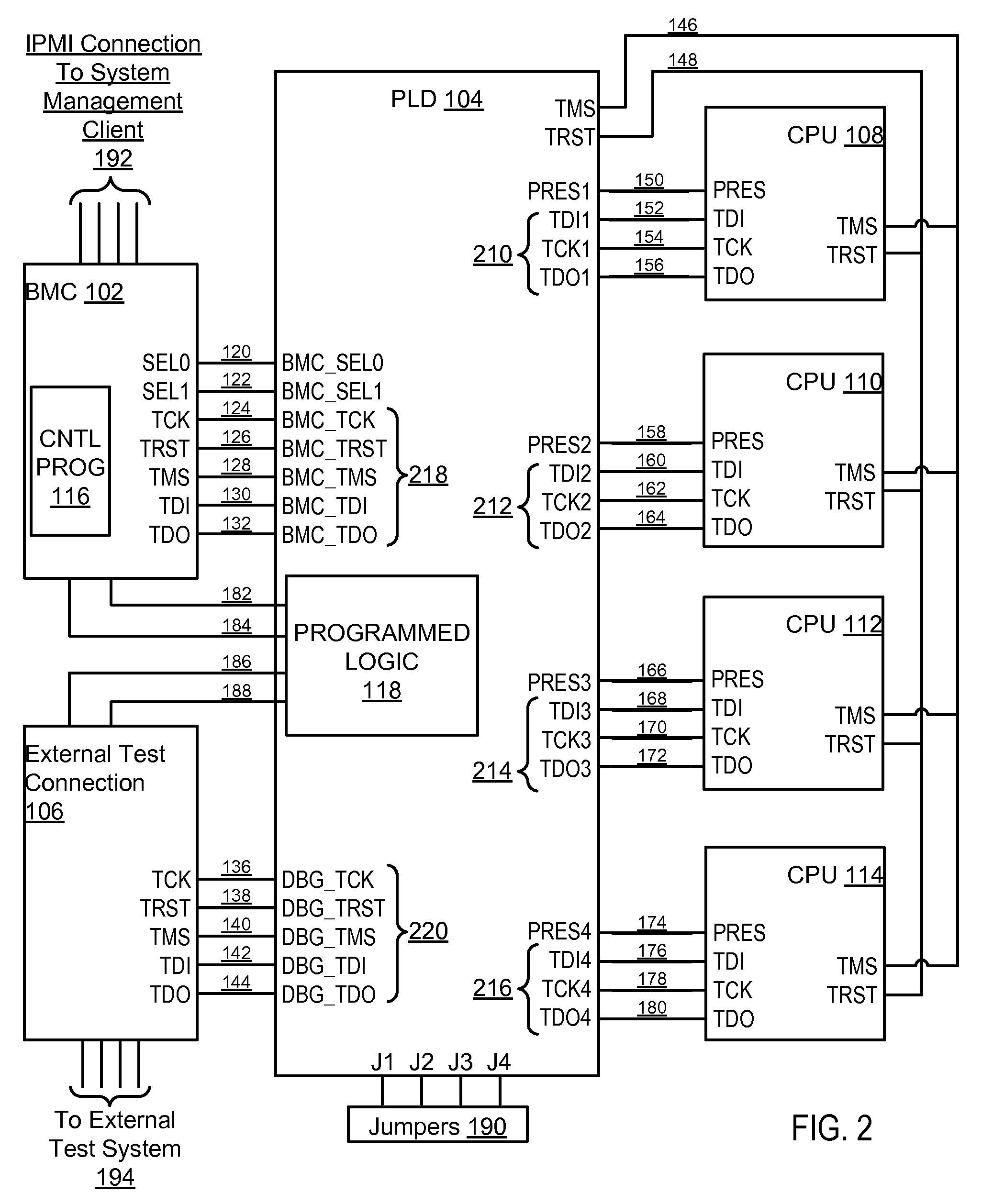Processor Fault Isolation
a technology of fault isolation and processor, applied in the field of data processing, can solve problems such as the difficulty of detecting faults in a single processor, the failure of the board, and the failure of the system, and achieve the effect of avoiding the failure of the board
- Summary
- Abstract
- Description
- Claims
- Application Information
AI Technical Summary
Problems solved by technology
Method used
Image
Examples
Embodiment Construction
[0024]Exemplary methods, systems, and products for processor fault isolation according to embodiments of the present invention are described with reference to the accompanying drawings, beginning with FIG. 1. ‘Processor fault isolation,’ as the term is used in this specification, refers to determining the cause of a problem with a processor. The term includes methods that can isolate a source of a problem to a processor or to a component or logic circuit or even a particular register within a processor. Such methods can include boundary scan operations to isolate faults.
[0025]FIG. 1 sets forth a block diagram of an exemplary computer (246) useful for processor fault isolation according to embodiments of the present invention. The computer (246) of FIG. 1 includes two computer processors (108, 110) or ‘CPUs’ as well as random access memory (256) (‘RAM’) which is connected through a high speed memory bus (296) and bus adapter (272) to the processors (108, 110) and to other components ...
PUM
 Login to View More
Login to View More Abstract
Description
Claims
Application Information
 Login to View More
Login to View More - R&D
- Intellectual Property
- Life Sciences
- Materials
- Tech Scout
- Unparalleled Data Quality
- Higher Quality Content
- 60% Fewer Hallucinations
Browse by: Latest US Patents, China's latest patents, Technical Efficacy Thesaurus, Application Domain, Technology Topic, Popular Technical Reports.
© 2025 PatSnap. All rights reserved.Legal|Privacy policy|Modern Slavery Act Transparency Statement|Sitemap|About US| Contact US: help@patsnap.com



